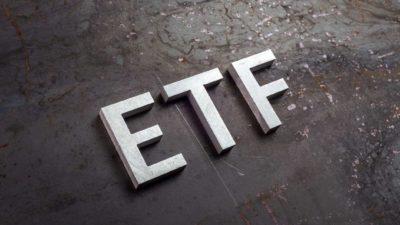I'm a big fan of investing for the long term because it gives our wealth the longest time to grow more quickly through the magic of compounding.
In my view, ASX exchange-traded funds (ETFs) are some of the most effective tools for delivering those returns. They enable investors to buy a group of businesses with a single investment, which is appealing because it provides instant diversification.
If I choose investments with good capital growth potential, I could invest a relatively small amount for my child, and it could compound into a much larger amount by the time they're 20 or 25.
Which ASX ETFs would I pick for my child for the next 15 years? The two below would be among my favourite picks.
Global X Fang+ ETF (ASX: FANG)
This fund's portfolio includes global businesses with some of the strongest long-term track records.
The portfolio's 10 positions include tech giants Nvidia, Crowdstrike, Broadcom, Meta Platforms, ServiceNow, Netflix, Apple, Alphabet, Amazon.com, and Microsoft.
These businesses are world leaders in their fields, such as smartphone technology, internet search engines, e-commerce, cloud computing, social media, cybersecurity, office software, online video, and so on.
If there were a new technological development in the (western) world, I'd expect at least one company within this ASX ETF to be involved.
And while past performance is not a reliable indicator of future performance, over the past three years, the FANG ETF has returned an average of 21.4%.
This fund provides exposure to the sort of juggernaut businesses that my child would benefit from owning over the long term.
Betashares Global Quality Leaders ETF (ASX: QLTY)
Of course, there are plenty of other businesses worth owning outside of the big US tech names.
I like the QLTY ETF as a way to get exposure to some of the highest-quality businesses in the world.
The QLTY ETF has 150 positions, which is plenty of diversification in my book.
To be chosen for the portfolio, these businesses need to rank well on four metrics.
First, they must have a high return on equity (ROE), meaning they must make strong profits for the amount of shareholder money retained inside the business.
Second, they must have a low debt-to-capital. In other words, their balance sheet must be in good shape.
Third, they must have good cash flow generation ability. We want to see the accounting profits translate into real cash flow being generated by the business.
Finally, earnings must be highly stable. In other words, we don't want to see regular and significant declines in profit.
When you put all those factors together, you're left with a very high-quality group of companies.
According to BetaShares, the QLTY ETF has returned an average of 14.6% per annum since its inception in November 2018. That's a very solid return for the portfolio's diversified nature, though it's not guaranteed to always be as good.
I think this is another very compelling investment for my child in the long term.









